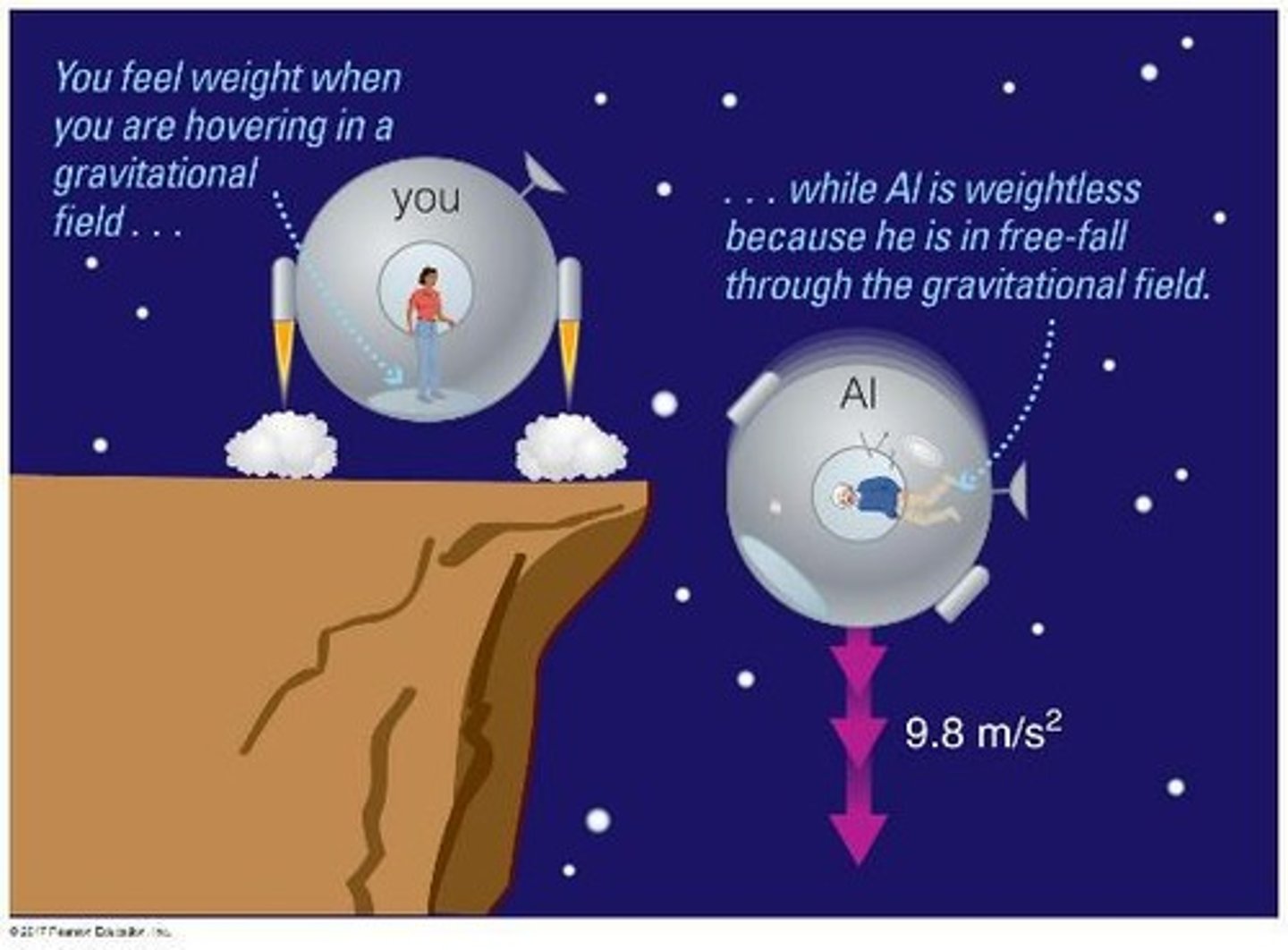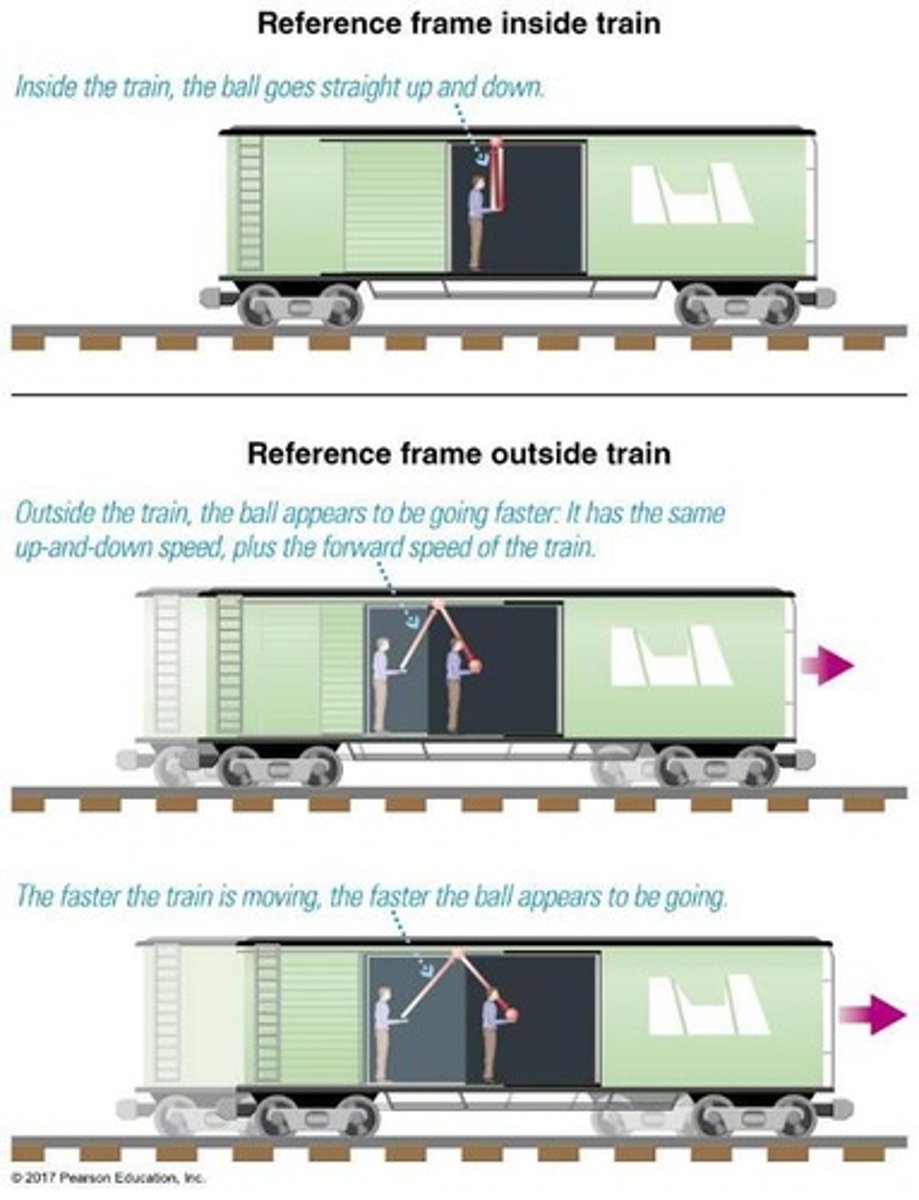Black Holes and Curved Spacetime: Concepts and Evidence in Astronomy
1/34
There's no tags or description
Looks like no tags are added yet.
Name | Mastery | Learn | Test | Matching | Spaced |
|---|
No study sessions yet.
35 Terms
What is Cygnus X-1?
A stellar mass black hole created when a massive star collapses at the end of its life, located in the constellation of Cygnus.
How does Cygnus X-1 interact with its companion star?
It pulls material away from a massive blue companion star, forming a disk that rotates around the black hole.
What causes the material in the disk around Cygnus X-1 to glow with X-rays?
The material becomes extremely hot before falling into the black hole.
What principle did Einstein propose regarding gravity and acceleration?
The Equivalence Principle, which states that the effects of acceleration are equivalent to those of gravity.

What happens to your weight in an elevator that accelerates downwards?
You would feel lighter than normal.

What occurs when an elevator cable is cut?
You would feel weightless as you fall.
What is the significance of free fall in terms of gravity?
In free fall, objects experience no apparent gravity, as they all fall at the same speed.

How does gravity affect the path of light?
Gravity can curve the path of a light beam, similar to how it curves the path of a spaceship.
What are the dimensions of spacetime?
Spacetime has four dimensions: three in space (x, y, z) and one in time (t).
What does the spacetime diagram illustrate?
It shows the progress of a motorist traveling east across a flat landscape, plotting distance and time.
What are the major ideas of special relativity?
No material object can exceed the speed of light, and space and time vary depending on the observer's point of view.
What analogy is used to describe how matter distorts spacetime?
Matter distorts spacetime similarly to how heavy weights distort a rubber sheet.

What phenomenon occurs when light passes near a massive object like the Sun?
The light is deflected due to the warping of spacetime, a phenomenon known as gravitational lensing.
What is Mercury's wobble an example of?
It is an example of the effects of warped spacetime on the motion of planets.
What is the relationship between the speed of light and relativity?
The speed of light is a constant and is the same for all observers, regardless of their motion.
How does the path of a ball differ for someone inside a moving train compared to someone outside?
The person outside sees the ball travel a longer path during its up-down cycle due to the train's motion.

What is the significance of the rubber sheet analogy in understanding spacetime?
It illustrates how massive objects create depressions in spacetime, affecting the movement of other objects.
What causes Mercury's orbit to precess?
The precession is due to perturbations and is explained by the general theory of relativity, particularly the warping of spacetime near the Sun.
What phenomenon occurs when radio signals pass near the Sun?
Radio signals are delayed due to the curvature of spacetime near the Sun.
What is the neutron star limit?
The neutron star limit is approximately 3 solar masses (3Msun), beyond which neutron degeneracy pressure can no longer support a neutron star against gravity.
What is the event horizon?
The event horizon is the boundary around a black hole where the escape velocity equals the speed of light, preventing anything from escaping.
What happens to matter beyond the event horizon of a black hole?
Matter is crushed into a singularity, a point where gravity is so strong that no known force can resist it.
What is a singularity in the context of black holes?
A singularity is a point where matter is crushed to infinite density, according to general relativity.
How does light behave near a black hole?
Light paths curve near a black hole, and once the star collapses beyond the event horizon, even light directed straight up cannot escape.
What is spaghettification?
Spaghettification is the stretching and squeezing of objects due to extreme tidal forces near a black hole's event horizon.

What is the difference in tidal forces near a supermassive black hole compared to a smaller black hole?
Tidal forces are gentler near a supermassive black hole because its radius is much larger.
Who popularized the term 'black hole'?
John Wheeler popularized the term starting in the late 1960s.
Who was the first to mathematically demonstrate that black holes are possible?
Karl Schwarzschild was the first to mathematically demonstrate the existence of black holes.
What is Cygnus X-1 known for?
Cygnus X-1 is a famous X-ray binary system with a likely black hole.
What criteria must be met to verify the existence of a black hole?
To verify a black hole, one must measure its mass, use the orbital properties of a companion, and confirm that its mass exceeds the neutron star limit.
What is a supermassive black hole (SMBH)?
A supermassive black hole is a black hole with a mass millions to billions of times that of the Sun, often found at the centers of galaxies.
What does LIGO stand for?
LIGO stands for Laser Interferometer Gravitational-Wave Observatory.
What significant event does LIGO detect?
LIGO detects gravitational waves produced by events such as the merger of black holes.
What do gravitational wave signals indicate?
Gravitational wave signals indicate the merger of two black holes, as predicted by general relativity.
What is the significance of the gravitational wave observations?
They provide evidence for the existence of black holes and help to understand their properties and behaviors.